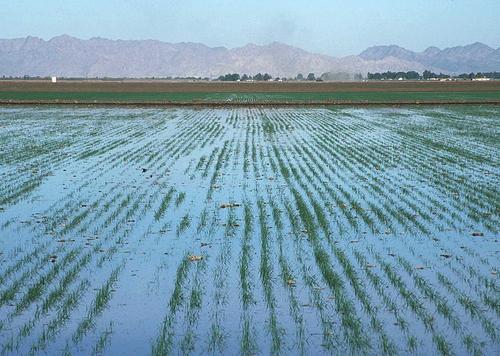Basin irrigation is the most common form of surface irrigation, particularly in regions with layouts of small fields. If a field is level in all directions, encompassed by a dyke to prevent runoff and provides an undirected flow of water onto the field, it is referred to as basin. (Stauffer & Spuhler 2012b)
If the basins are small or if the discharge rate available is relatively large, there are few soils not amenable to basin irrigation. Generally, basin irrigation is favored by moderate to slow intake soils and deep-rooted, closely spaced crops. Crops, which do not tolerate flooding and soils subject to crusting can be basin irrigated by furrowing or using raised bed planting. Basin irrigation is an effective method of leaching salts from the soil profile into the deeper groundwater.
Basin irrigation systems can be automated with relatively simple and inexpensive flow controls at the basin inlet but also holds a number of limitations that are recognized primarily in association with agriculture in the less developed countries. Accurate land leveling is prerequisite to high uniformities and efficiencies, but this is difficult to accomplish in small areas. The perimeter dikes must be well maintained to eliminate breaching and waste. It is difficult and often infeasible to incorporate the use of modem farm machinery in small basins, thereby limiting small-scale basin irrigation to hand and animal powered cultivation.
(Walker 2003)
